Google Workspace Help Zone
Table of Contents
Gmail
- Your Gmail Inbox: Email Filters and Categories
- Advanced Search
- Inbox Display Options
- Using and Organizing Gmail Labels
- Starred vs. Important Tabs
- Smart Compose and Smart Reply
- Email Nudges and Priority Mail
- Creating your own Email Templates
- Creating a Signature
- Schedule Send
- Recalling an Email after Sending
- Vacation/Out of Office Response
- Add Events in your Calendar from Gmail
Overviews
- Google Chat and Spaces Overview
- Google Tasks Overview
- How to Save an Email as a Task
- Google Keep Overview
Google Calendar
- Creating a Calendar Event
- Out of Office Notices
- Hiding Calendars
- Sharing Calendars
- Calendar Views and Printing a Schedule
- Daily Agenda
- Subscribing to Calendars
- Seeing Someone’s Availability
- Calendar and Gmail Integration
Google Drive
- Saving in Google Drive
- Sending or “Sharing” with Google Drive
- Access on Google Drive Files
- Uploading Files to Google Drive
- Shortcuts
- Starred Tab and Priority Documents
Google Sheets, Docs, and Slides
Mobile Apps
Gmail
Your Gmail Inbox: Filters and Categories
Gmail automatically has some sort of organization so that you do not see all of the messages in your inbox at once. They use machine learning to filter out spam, and additional filters can allow you to further organize emails into categories like “promotional” and “social” so that you do not see a bunch of emails, other than your prioritized messages, at once. This is a very useful feature to keep your most important emails at the front of your inbox and put less significant subscriptions or messages in other sections.
To better organize your email inbox on your desktop, you can add or remove inbox categories.
- Open Gmail. Click on the settings icon in the top right corner and “See all settings.”
- Click on the “Inbox” tab. The Inbox type should be default.
- Under “Categories,” you can choose which inbox categories you would like to add or remove by checking or unchecking the boxes. The options are primary, promotions, social, updates, and forums.
To move an email, drag an email to a new category. If you want to move all emails from that sender to a new place, on the bottom left pop up notification, click “”Yes”.
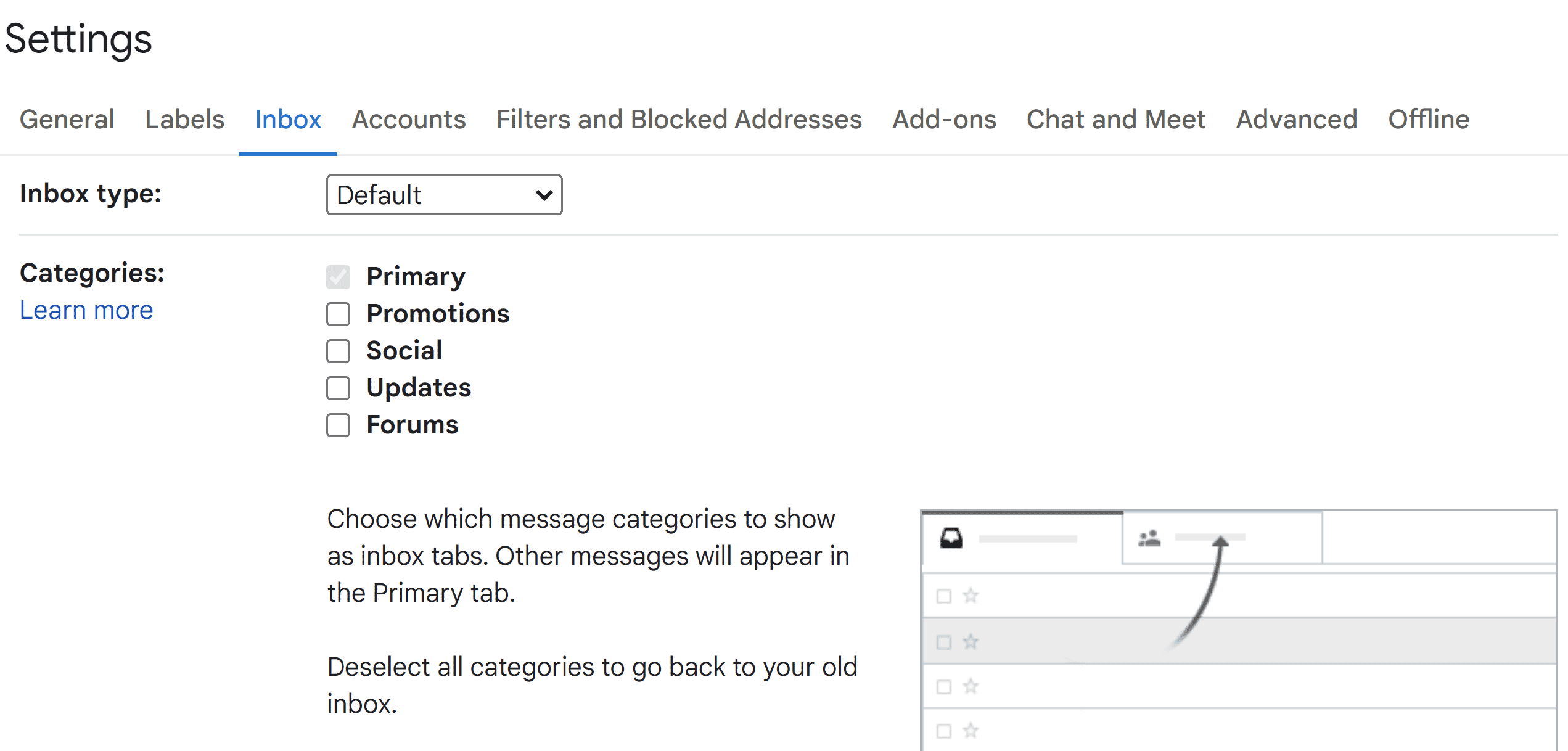
Advanced Search
At the top of your Gmail homescreen, there is a search bar, wihere you can search for a certain keyword or sender. At the righ of the search bar, there is an icon that will allow you to modify your search and create a more advanced search. Here, you can choose who the message is from, who is was sent to, the subject, when it was sent, and more “advanced search options.
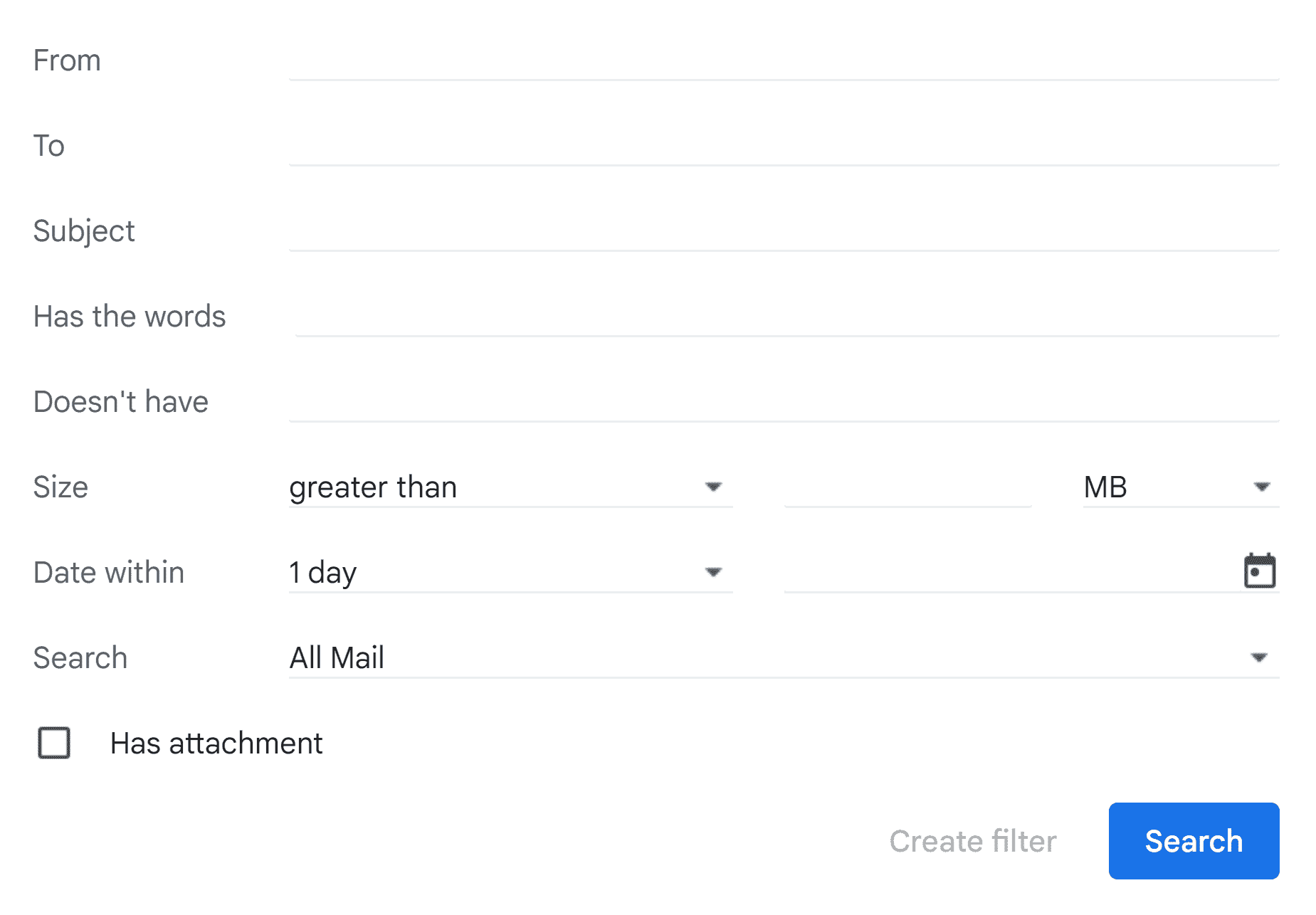
Inbox Display Options
Gmail allows you to change the layout of your inbox depending on preference. You can change the way your inbox appears to make it more visually appealing for you.
There are two ways to change or modify your inbox viewing settings.
- Click on the Settings icon in Gmail and view QUICK settings. The new Gmail version will automatically show this as you scroll. Here, you can customize your inbox view, choosing options like “compact” versus “comfortable”
Or, similarly through settings.
- Go to Gmail. Click Settings, “See all Settings,” and choose Inbox in the top menu.
- You will encounter a few options, including “inbox type” and “reading pane.”
-
- You can then choose options including: Default, Important first, Unread first, Starred first, Priority Inbox, or Multiple Inboxes.
- You can also see the “Enable Reading Pane” for split view. This option provides a way to read emails next to a list of conversations so it is easy to read and write messages.

Using and Organizing Gmail’s Labels
Labels in Gmail are another tool to help you organize your inbox. Google will automatically filter some messages, but you can also label messages on your own.
- Select and open an email you would like to label.
- At the top of that email, there will be multiple icons. Click on the label icon, which will likely be the second to last icon. If you are unsure, you can hover over the icon and its name should appear.
- When you click on the icon, you will see options to label your email, including social and updates. For businesses with Trend Micro antivirus, you will also see “Risky” from your antivirus company.
- You can create new labels if you so choose. If you are working on a certain project, maybe you would like to file all of the emails pertaining to that project into a new inbox called “Marketing Project.” Gmail makes this easy. Manage labels as well if you would like to delete, rename, or rearrange the labels you have.

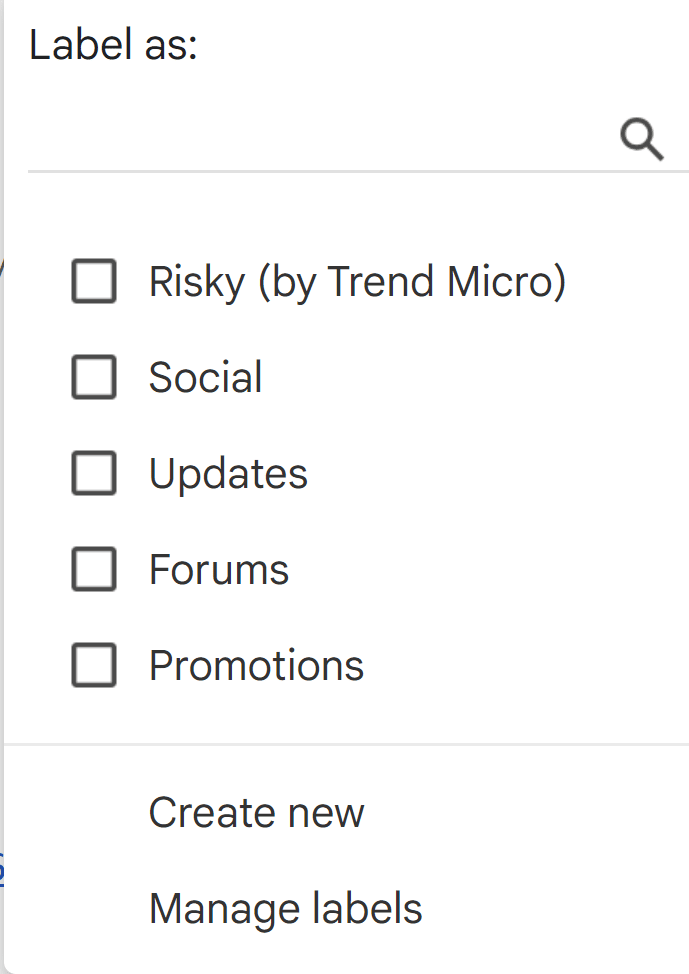
Starred vs. Important Tabs
Starred and important messages in Gmail sound similar but are actually different features. “Starring” a message is a manual way of tagging important emails, whereas the “Important” tab includes emails that Gmail finds important. Gmail automatically labels emails that they find important, such as a message from your boss or coworker, and will place it under the “Important” tab on the left hand side of the Gmail screen.
To star an email in Gmail, you can click on the star icon. This is located on the left of the message when it is in your inbox, or on the top right corner if you open the email. You can additionally customize your stars by going to “Settings” and scrolling down to “Stars” under “General.” Here you will see multiple colors and presets that may help you organize your inbox.
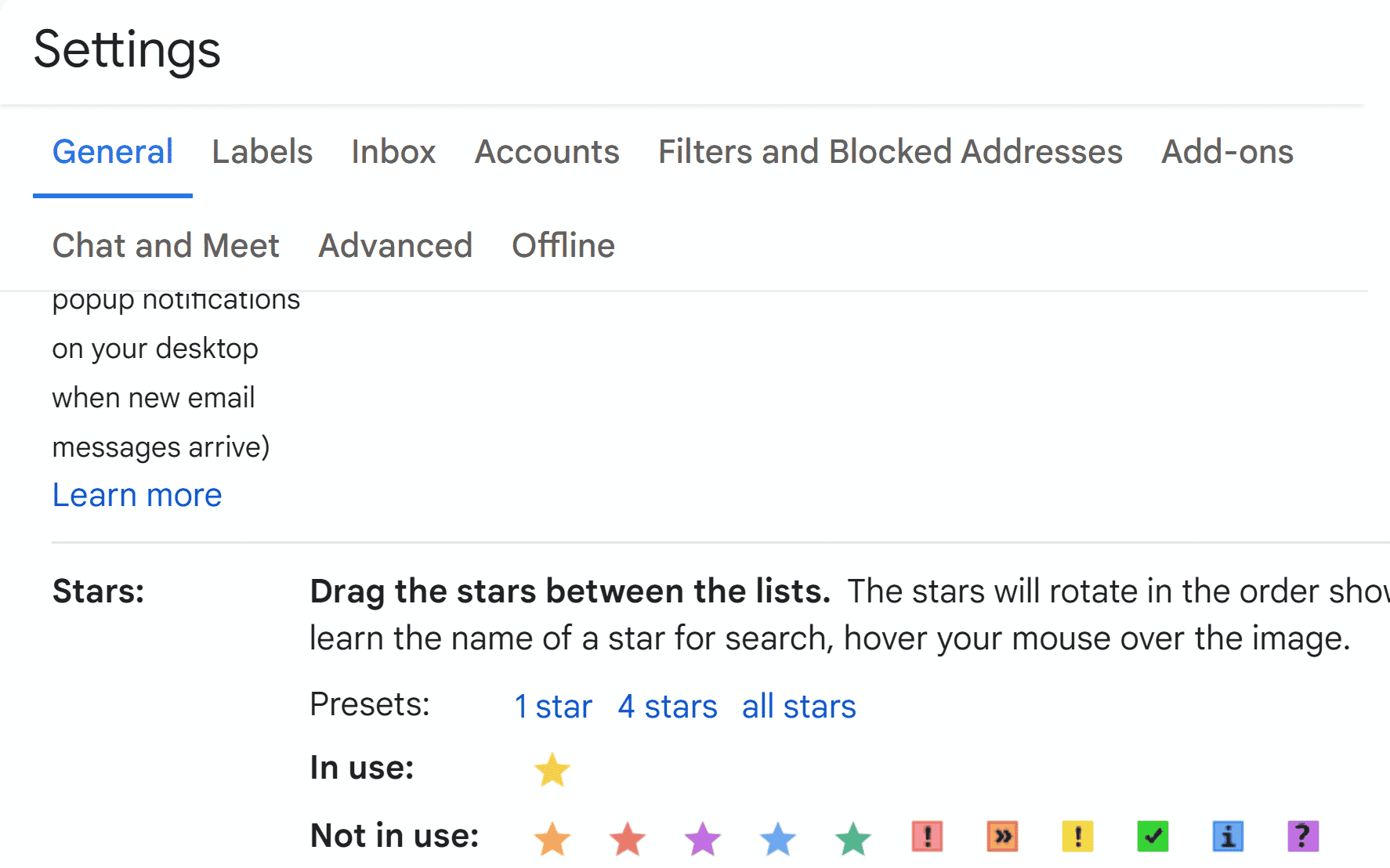
Smart Compose and Smart Reply
Your Gmail account includes “smart compose” and “smart reply” to help you write emails faster. Gmail uses machine learning to fill in the gaps in the conversation and offer suggestions as you compose your email. Google will additionally create suggestions based off of your writing style, known as Smart Compose personalization. Only you will see your own private, personalized suggestions for your account. To learn more about Google’s policy and custom suggestions, visit Google’s help journal.
How to disable or enable smart compose (and personalization) on your desktop
- On the top right corner of your Gmail window, click “Settings” and “See all settings.”
- Under “General,” scroll down to “Smart Compose.”
- For Smart Compose, select Writing suggestions on or Writing suggestions off. For personalization, select Personalization on or off.

Email Threads and Conversation View
When you get emails in a thread, it can be hard to keep them organized. With the conversation view option, you will be able to choose whether or not you get a separate email when someone replies to a thread, or if you do not. To turn on conversation view, go to settings and see all settings, then scroll drown to conversation view.
Turning off conversation view will make you get a separate email each time someone sends a reply. When conversaton view is on, you will see the messages as a conversation, and will have to open up older messages, rather than having new messages in your inbox.

Email Nudges and Priority Mail
Gmail offers a feature where it will provide a “nudge” so that you respond to an email or send another message if a recipient has not yet responded. Gmail will typically provide a message 3 or more days after sending an email notifying you to follow up on the message.
How to adjust nudge settings:
- Open Gmail. Click on the settings icon in the top right corner and “See all settings.”
- Under “General,” scroll down to see “Nudges.” You can check or uncheck the following preferences.

Creating your own Email Templates
If you would like to send the same message multiple times but do not want to keep rewriting it, Gmail has a feature so that you can create an email template. Later on, you can open the template and send it out in just a few clicks. This is much faster than rewriting or recreating the same email several times.
To enable email templates on Gmail desktop
- Open Gmail and go to Settings and “See all settings” in the top right corner.
- Click “Advanced” at the top, and in the “Templates” section, choose “Enable”
- Be sure to save this by clicking “Save Changes.” Now you can create and edit templates.
To create an email template on desktop:
- Open Gmail and click Compose.
- In the Compose window, enter your template text. Click More Templates.
- Choose an option
- To create a new template, click Save draft as template.
- To change a previously saved template, click Save draft as template and under Overwrite Template, choose a template and click Save to overwrite it.
To insert a template in Gmail on desktop:
- Open Gmail and click Compose. Click More and go Templates.
- Under Insert template, choose a saved template to insert in your email.
- Compose the rest of your message and click Send.
Creating a Signature
You may choose to put a signature at the end of each of your emails containing information such as your name, position, and contact information. Google allows you to create a signature that will automatically go at the end of every message you send. To do so:
1. Go to Settings and “See all settings.”
2. Scroll down to “Signature” and type what you would like your signature to be. Note that you may need to modify your signature defaults, and make sure to save changes at the bottom of the screen.
Schedule Send
Schedule send is a very useful tool so that you can pick the exact date and time you would like to send your message. After creating and scheduling an email to be sent, Google will automatically deliver that message to the recipient at your selected date and time. Whether you want to send that email in an hour or in two weeks, it is a great tool.
To schedule a email:
- Open Gmail and compose your message.
- After you write your message, you will see a blue “send” button with a small drop down arrow at the bottom of your screen. Click the drop down arrow, and you will see “schedule send.
- After clicking “schedule send,” you will see a few options, such as “tomorrow morning,” “this afternoon,” and “Monday morning.” You can also “pick a date and time” to customize the date/time you would like to send the message.
- When you choose the preferred date and time, Google will automatically know to send this message at that time. The message will show up in the “scheduled” tab at the left of your screen.
- If you choose the “Scheduled” menu, you can cancel messages here. by clicking into the email and choosing “cancel send.” This will put the message back to a draft, which you can delete, modify, or reschedule for sending.
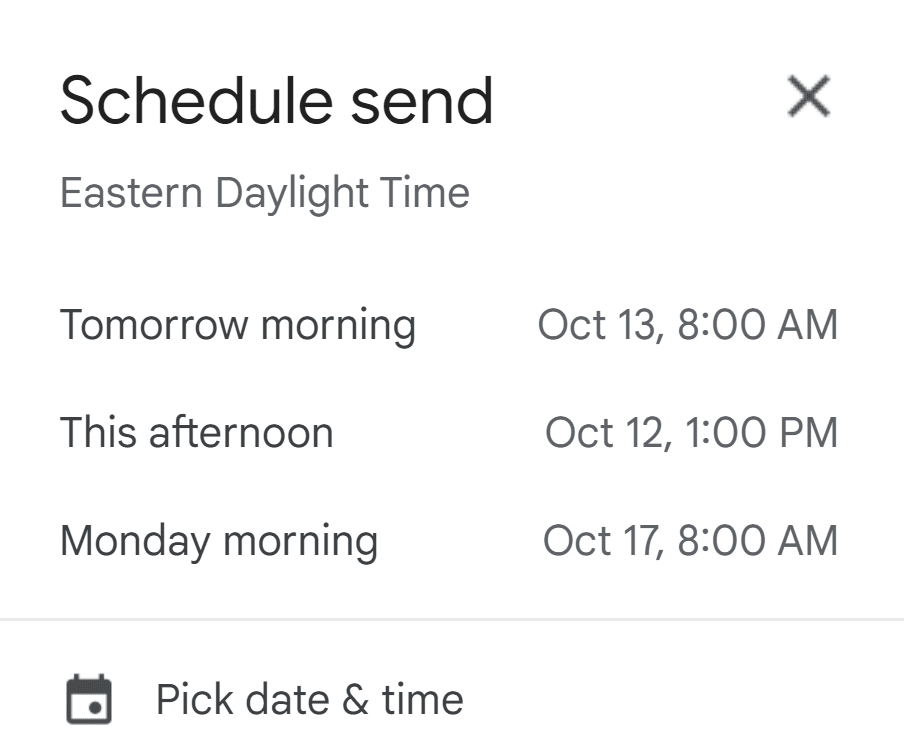
Recalling an Email after Sending
You can recall an email sent through Gmail as well. After sending an email, an icon will appear at the bottom of the screen, telling you that you sent an email, and asking if you want to “undo” that action.
To choose the amount of time you can take to recall a message:
- Go to settings and “See all Settings”
- Next to “Undo Send,” select a Send cancellation period of 5, 10, 20, or 30 seconds. Don’t forget to save your changes.
Vacation/Out of Office Response
If you are going out of office or on vacation for a set period of time, you may want to send out of office replies to people who message you. Whenever someone emails you while you are out of office, they will receive an automated message that you wrote. To do so:
- Open up Gmail on your computer. In the top right corner, settings, and “See all Settings.”
- Scroll down to the “vacation responder” section.
- You will have an option to turn on “vacation responder,” so click on.
- Now, you may set a period of time for which you will be out of office, as well as a message you would like to send. Make sure to click “Save changes” at the bottom of the screen to make sure this feature is on.
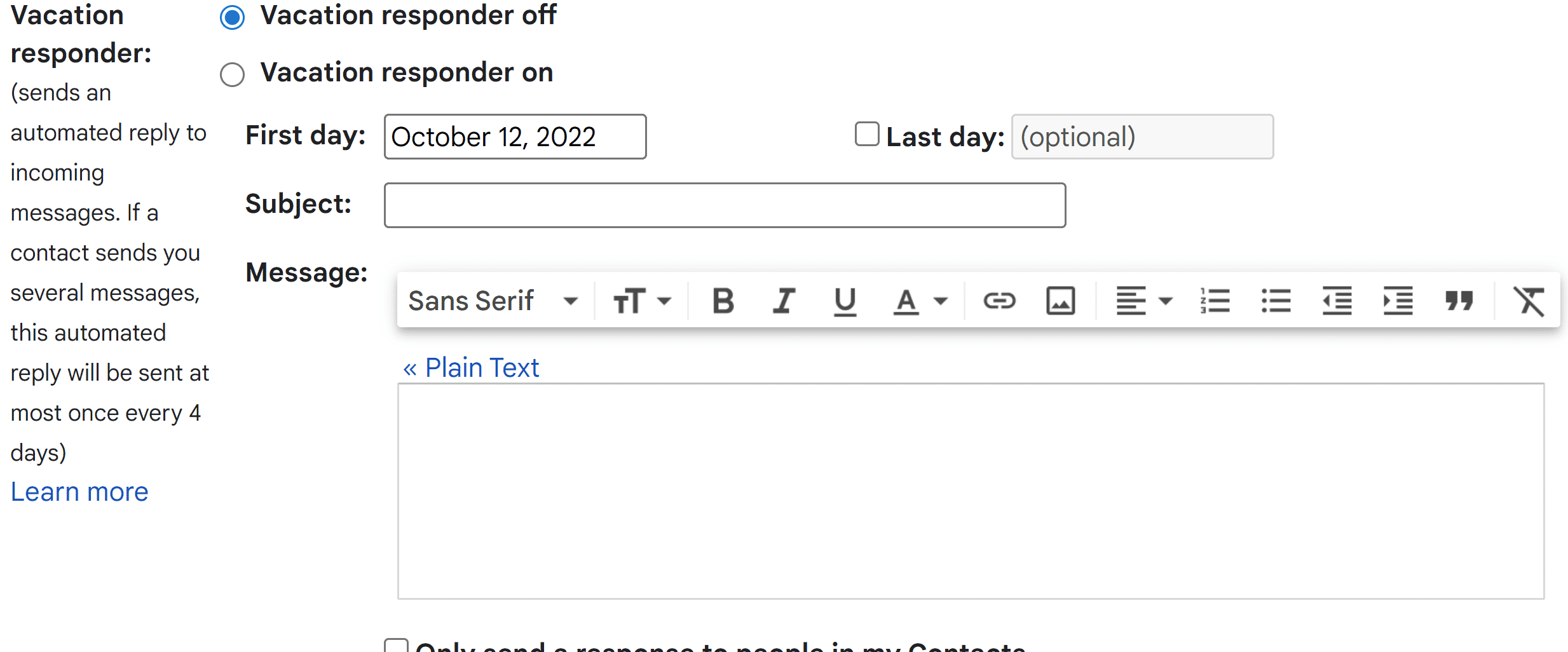
Add Events into your Calendar from Gmail
Gmail allows you to add your events into your Google Calendar. This makes it easier to organize your agenda with the events you may be notified about in your email account. Keep track of events like meetings, flights, lunches, and even concerts using the calendar.
How to add events from Gmail to Calendar
First, turn on smart personalization
- In Gmail, go to Settings and “See all settings.”
- In the “General” tab, scroll to “Smart features and personalization.”
- To turn smart features on or off, check or uncheck the box.
Now we can show automatic events in Calendar
- Open Calendar and go to Settings. Scroll down to Events from Gmail
- Check the box next to Show events automatically created by Gmail in my calendar.
- In the Visibility of Gmail events field, choose an option:
- Calendar default, private, or only me

Overviews
Google Chat and Spaces Overview
A neat feature of Google for your business is Google Chat and Spaces, which allows you to connect with your coworkers virtually, all through Gmail. These are excellent options for quick messages or questions that do not require an email, but must be communicated. In Google’s recent update, chat and spaces are easy to access, located on the left side of the screen.
Google Chat
- Using Google Chat, you can have one-on-one conversations with selected people. To start a chat, you can hover over the chat icon on the left hand side of the Gmail screen. You might see previous messages here, where you can chat with people you have already set up a chat with. To create a new chat, you can also click “New Chat” and select a person (or space, which we will discuss shortly)
- Google Chat is handy because you can either make your chat fullscreen or compress it to keep multiple chats open at once. If you click on the chat, you will enter the fullscreen mode in which the chat will appear on the entire Gmail screen. To minimize this window, you can choose and the chat will appear at the bottom of your screen. You can click that icon for multiple chats to keep a few messages open at once.
- The icons at the top, , allow you to minimize the screen further, enlarge the chat, or exit the chat altogether. Your chat will be saved for 24 hours if you exit.
Google Spaces
- Spaces is like a groupchat located in Gmail’s interface. You can access or create a new space the same way you would for chats by hovering the spaces icon at the left of the screen. Spaces follows the same convention as does Chat, where you can enlarge or minimize the space and chats delete after 24 hours.
- Selected individuals can add or delete people to the chat.


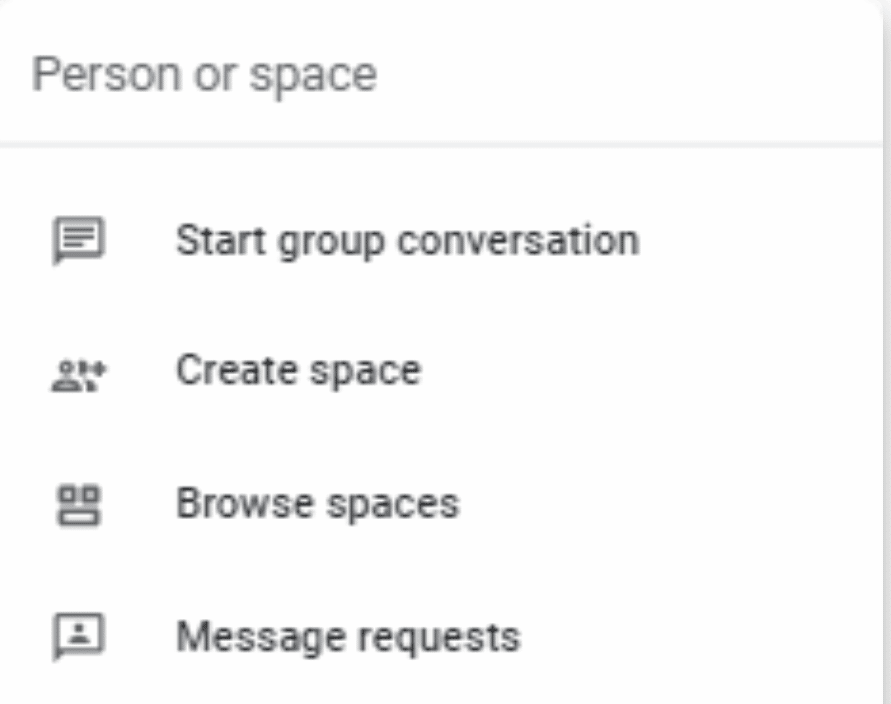
Google Tasks Overview: How to Add Tasks
Google Tasks allows you to create a to-do list in your desktop Gmail or in the Google Tasks app. This way, you can simply see all you required tasks in your email account. You can also integrate your tasks into your Google Calendar and create subtasks to stay more organized.
Your work account may have Google Tasks diabled. Check this by clicking on the Tasks apps. If you do not see it, your administrator probably has it disabled.
If tasks is enabled, you can create tasks in different Google Workspace apps, like Gmail and Google Sheets.

How to Save an Email as a Task
In Gmail, you can add an email to Google Tasks. To do so:
- Open Gmail and check off the email you’d like to add to tasks. Do this by clicking on the box on the right hand side of the message in your inbox.
- At the top menu, there is an icon with a check mark and a plus sign. Click this icon to add your email to tasks.
Google Keep Overview
Keep is a note-taking application based in Google. It is basically a digital notepad. You can use Keep when logged into your Gmail account. To access Keep, you can simply search Google Keep into your web browser. In Keep, you can create notes and reminders on the left hand side of the screen, as well as edit labels for your notes, see your archive, and trash. Simply start typing to create a note, where you can create a title and content to your note.
- You can also change the background color, add a collaborator, include an image, and even create a reminder for your note. You can create a reminder for later that day, tomorrow, or a selected time. These options will be located at the bottom of your note in progress.
- Pin your notes by choosing the push-pin icon at the top right corner of your note.
Google Calendar
Google Calendar is a useful tool to keep you and your organization on track with events, meetings, and work schedules. You might have a calendar for your entire organization that you share, or maybe you have one for your personal events. Either way, Calendar is a great way to collaborate, communicate, and organize yourself.
Creating a Calendar Event
To create a calendar event:
- Open Google Calendar and click “Create” on the left side panel.
- Choose from “Event,” “Out of Office,” “Task,” and “Appointment Slots”
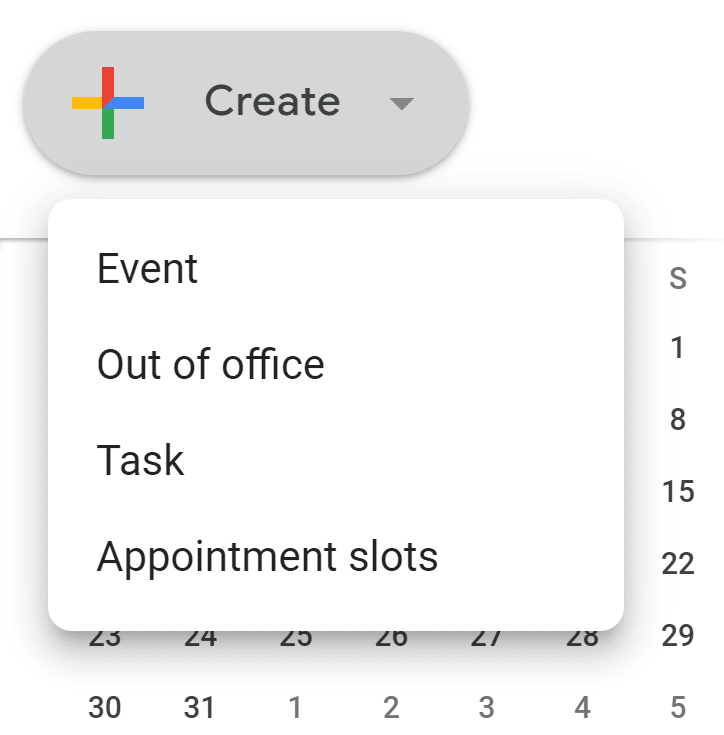
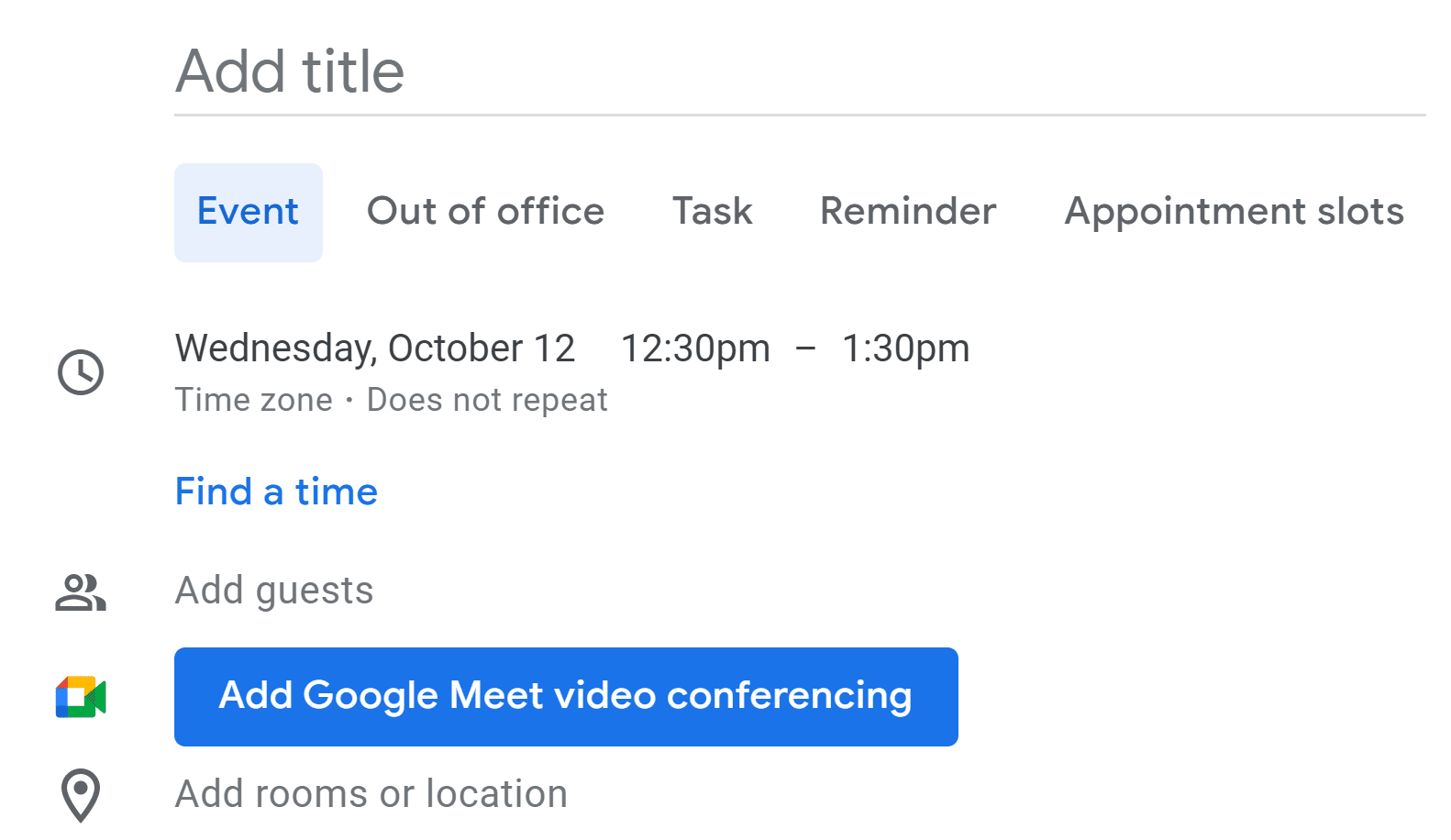
Out of Office Notices
One type of calendar event is out of office, i.e., when one employee or the company is on vacation or will not be in office. When you create a calendar event, choose “out of office” to indicate that you will not be in office for a set period of time of your choice. This option is great because you can also choose to “Automatically decline new meetings” (by checking/unchecking the box that appears) which will allow you to automatically say “no” to any events you might be asked to attend while you are away. You can change the visibility of the out of office notice to private, public, and restricted as well.
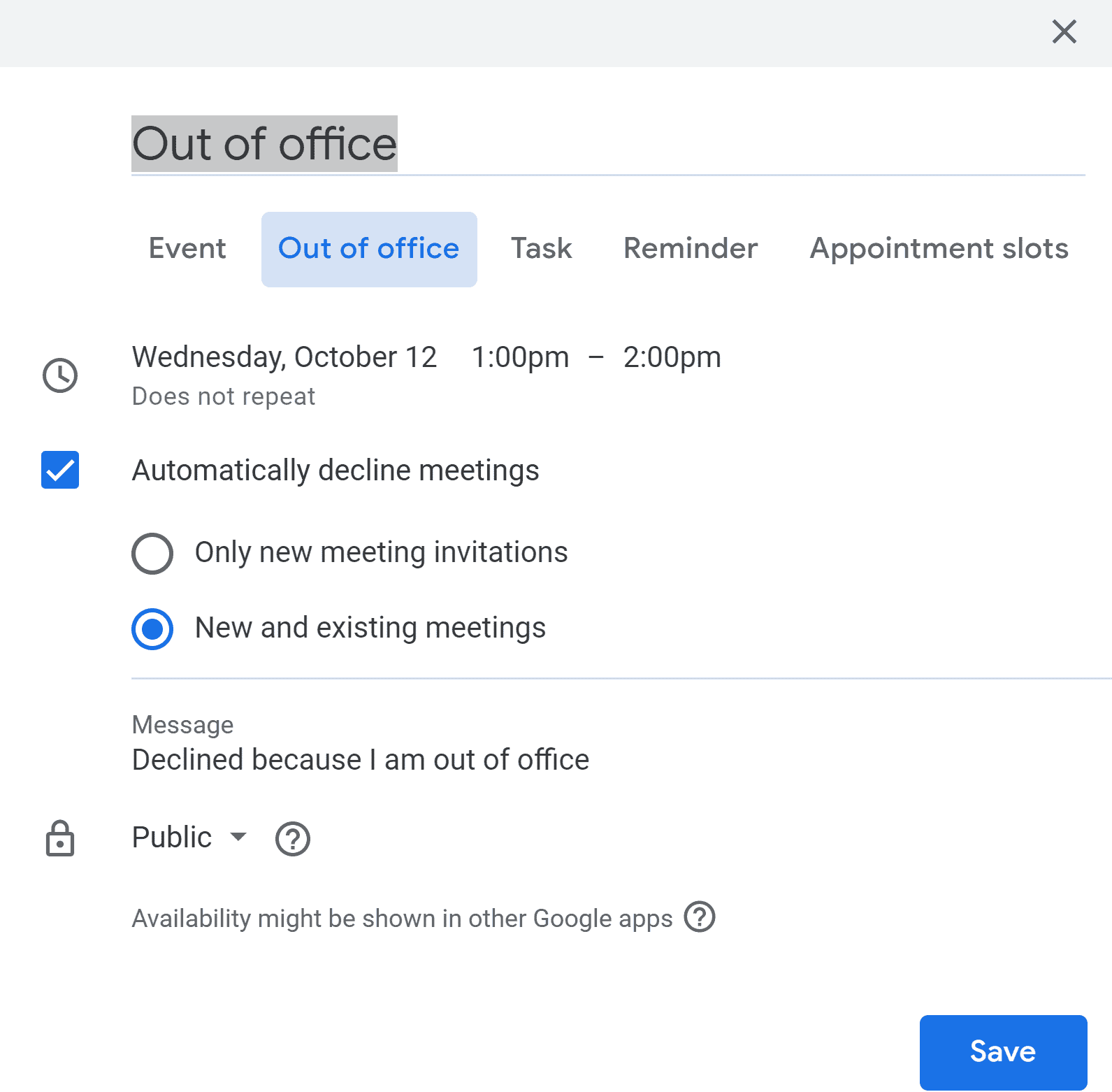
Hiding Calendars
You can choose which calendars you would like to appear in your Google Calendar. By default you might see calendars like Holidays in the United States or (your name’s) Calendar. You might also see any shared calendars. On the left side panel of Google Calendar, you can check or uncheck certain calendars under “My Calendars” or “Other Calendars”. Then, these calendars will appear or not show up in your Google Calendar.
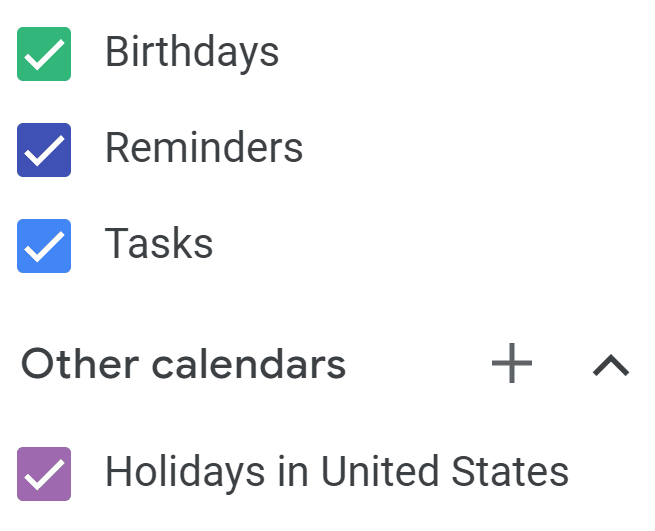
Sharing Calendars
Your business can share calendars among coworkers, making it easy to collaborate with and view different events. These shared calendars are useful to view when there are meetings, who is in office, important dates/events for your company, and more. To share a calendar:
- Open up Google Calendar and view the left side panel. Here, you will see your calendars.
- Choose the calendar you want to share, and click the three dots on the right. When you click this icon, it should say “Settings and Sharing.” Choose that.
- After clicking the three dots, you will have multiple options of sharing the calendar. You can send a sharable link by copying and pasting the link and sending via email, message, etc. You can also share the calendar to individuals by inputting their email. They can then access the calendar through their email.
Calendar Views and Printing a Schedule
Google Calendar can show several views including the outline of the week, day, month, year, schedule, and several days. To change the view:
- Open Google Calendar. At the top right, next to the share button and the several dots, you will see a word, IE: week, month, schedule, etc. By default, Calendar may show you a week view for example.
- Click on the word “Week” and you will see a dropdown of different options. You can now change how you view the schedule.
To the left of these options, you will see a settings icon. If you click on settings, you will see a few options, one of which being “Print.” If you would like to print your schedule, you can do so here.
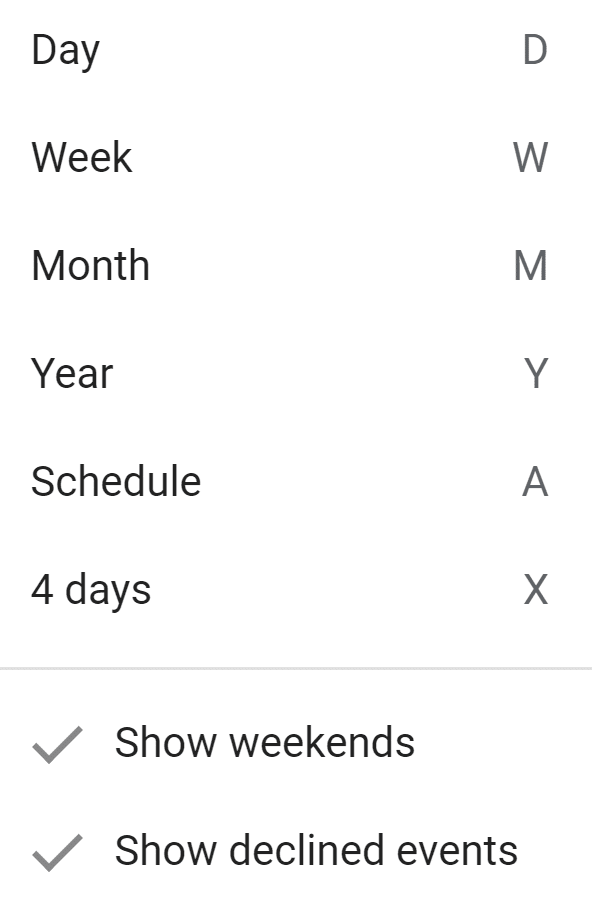
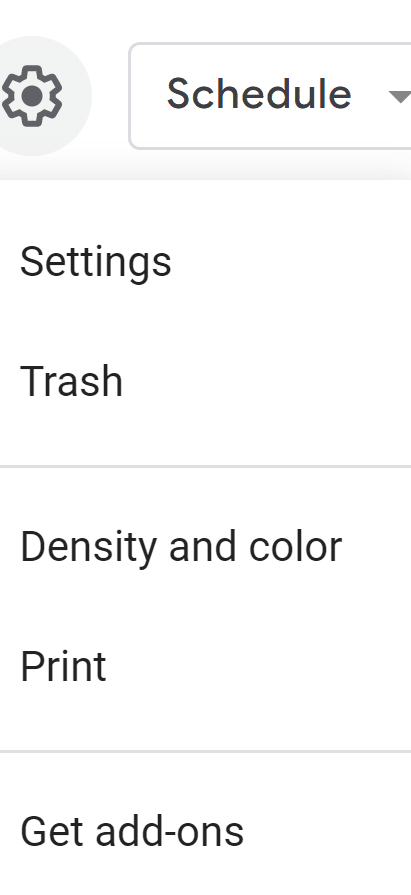
Daily Agendas
Google Calendar can send you your daily agenda in your Gmail account. To turn this feature on:
- Open Google Calendar, go to Settings at the top right and click “Settings.”
- On the left side panel, scroll down to “Settings for my Calendars” or “Settings for Other Calendars.” Click on the calendar you would like to have an agenda sent for.
- Now, choose “Other notifications.”
- There will be several options of notifications you may wish to receive. Click on the drop down next to Daily Agenda and choose “E-mail.” To turn this feature off, simply click “None.”
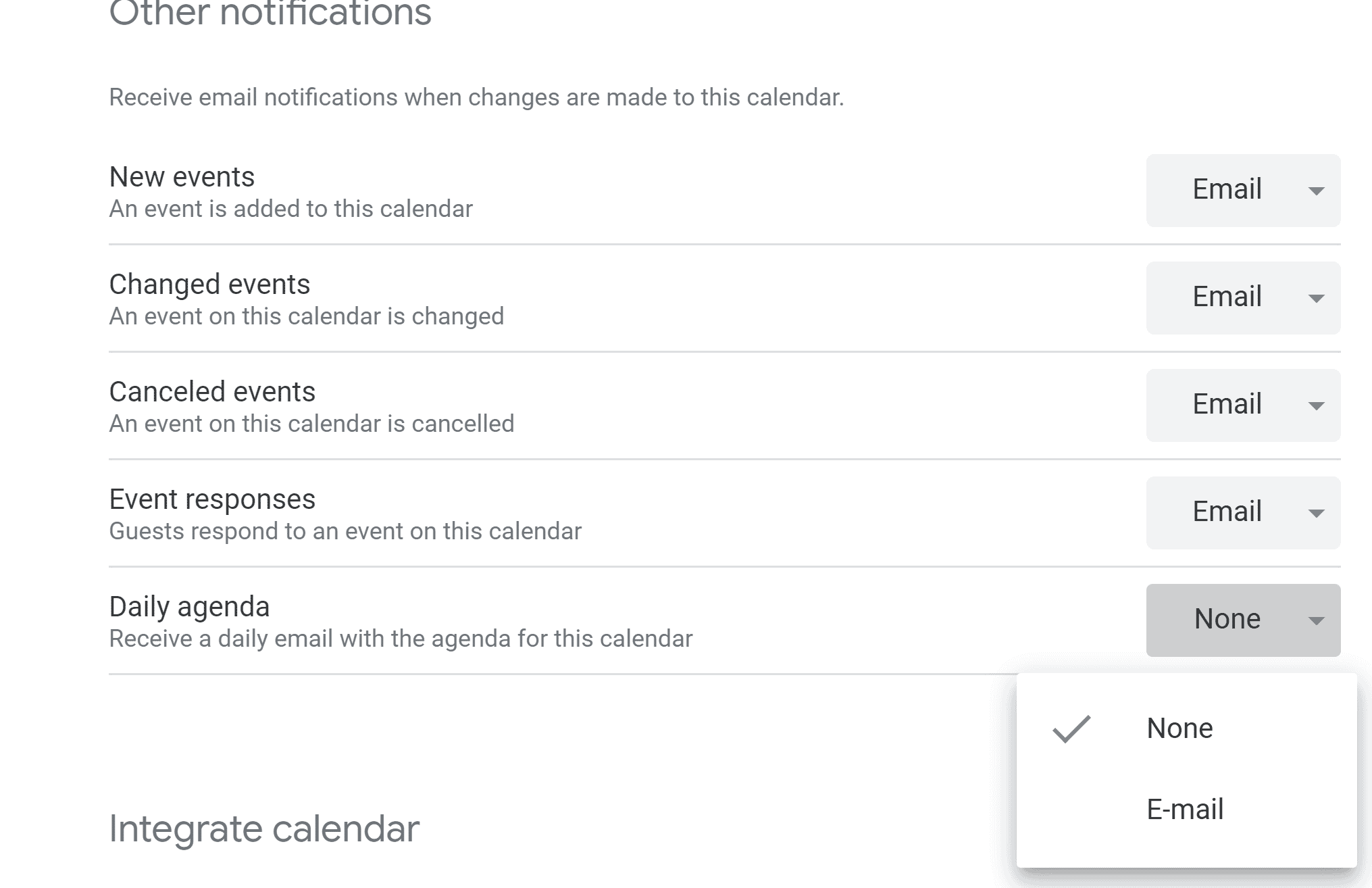
Subscribing to Calendars
To view a calendar in Google Calendar, you might need to be subscribed to it.
- On your computer, open Google Calendar.
- On the left, next to “Other calendars,” click Add and choose Subscribe to calendar. If the calendar has been shared with you, you’ll get an email.
- In the “Add calendar” box, enter the person’s email address, or select one from the list.
- Press Enter.
To unsubscribe:
- On the left side panel of Google Calendar, scroll down to “Settings for my Calendars” or “Settings for Other Calendars.” Click on the calendar you would like to unsubscribe from.
See Someone Else’s Availability
If someone’s calendar is shared with you or you are in the same organization, you might be able to check their availability with Google Calendar. This is useful for scheduling and preparing time to meet. To check someone’s availability:
- Go to Google Calendar. On the left side panel, under “Meet with” click “Search for people”
- Type in the name of the individual and choose that person whose calendar you want to see. If their calendar is shared publicly or they are within your organization, you can now see their events on your Google Calendar.
Calendar and Gmail Integration
Google Calendar and Gmail work well together and you might see overlap between invitations sent in Gmail and your Calendar. Perhaps your boss sends you an invitation to your email for a meeting via their Google Calendar. This event will show up on the Google Calendar associated with that email. You can select “Yes,” “Maybe,” or “No” for that event, and your calendar will adjust accordingly. This crossover is a great way to stay organized without having to manually enter any invitations or meeting details.
Google Drive
Google Drive is a cloud-based storage solution that allows you to create, save, and share files with other users. In the workplace, Drive is especially useful to allow teams to collaborate virtually and give multiple users access to important documents.
Saving in Google Drive
As long as you are connected to the internet, Google Drive will automatically save your files as you edit them, so there is no need to click “save” whenever you make changes to your documents. However, note that in instances where there is poor connectivity, it will be difficult to save your changes and you might not be able to edit or change that file. Additionally, any changes will automatically update for any users that the file is “shared” with.
How to Save an Emailed File to Drive
You can save files you received in your email to your personal drive.
- Open your email and click the “Save to Google Drive” icon on your Gmail or Google Apps mail
- Click “Save to Google Drive” in the top menu.
Sending and “Sharing” in Google Drive
To share a file, you can simply click the blue share button at the top right corner of any Google Doc, Sheet, or Slide. Then, you can type in the email address where it says “add people and groups” of the person you want to share the file to. This person can then be an “editor” (who can make changes on the file), “commenter” (who will create comments on the file), and “viewer” (who can only look at the file). Similarly, you can remove access, transfer ownership, and add expiration, so the viewer can only access the file for a set period of time.
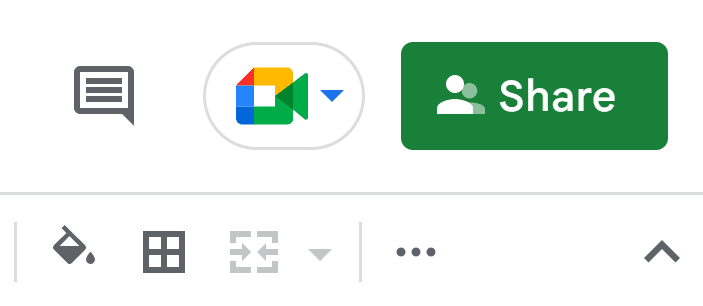

Access on Google Drive Files
Similar to sharing files, you can adjust who has access to the file using the share button. A “restricted” file will only be available to certain users. Your business may allow you to share the file with all users in your organization, which you can choose by clicking on your company’s organization name. You can also copy the link and send it via email, message, or another sharing method. However, for businesses, these files might be restricted.
Uploading Files to Google Drive
Google Drive can intake PDFs (portable document format), JPEGs (photos and the like), Word documents, Excel spreadsheets, and more. You may have a file that you would like to upload to Google Drive to share with others or simply save to your account. To do so:
- Open Google Drive and click on “New” on the left panel of the home screen.
- When you click new, a drop down menu will appear, you can select “File upload” or “Folder upload.” You can then select any file from your computer to upload into Google Drive.
Shortcuts
In Google Drive, you may have seen some “shortcuts” of your files rather than the actual file itself. A shortcut is a link that references the file or folder and can be stored in your or a shared drive. This makes it easier for you and/or your team to find and organize files or folders in multiple locations. You might use a shortcut in a shared team folder.
Note that when you create a shortcut, the titles are visible to everyone with access to the folder/drive that the shortcut is in. If they see the shortcut, they might not be able to open it. The file’s permissions do not update when you create a shortcut to it. Give any new users access to the original file. Here’s how to create a shortcut:
- Open Google Drive on your device.
- Right click the file or folder where you want to create a shortcut.
- Click Add shortcut to Drive.
- Select the location where you want to place the shortcut.
- Click Add shortcut.
Starred Tab and Priority Documents
If you have important files in Drive, you may wish to add a star. Similar to Gmail, you can star documents manually by clicking the star icon, which will change the color to gold to indicate the file is starred. You can view all starred documents in the starred tab.
The priority tab, located on the left side panel of your Drive home screen, differs from the starred menu in that it creates “workspaces” and includes Google recommendations of “priority” files. As with Gmail’s important tabs, priority uses machine learning to generate priority suggestions. You can additionally create workspaces which will put files you work on into one place without changing the location within the drive (i.e., folder).
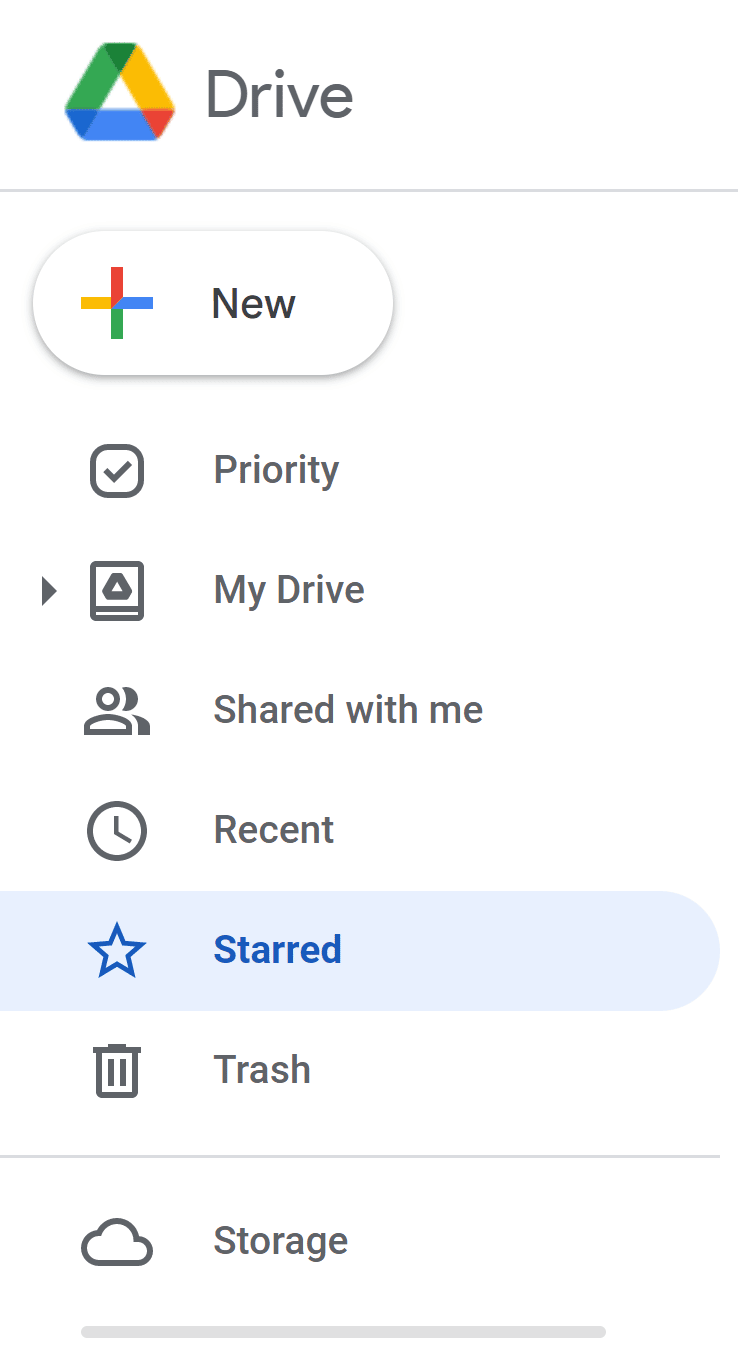
Google Sheets, Docs, and Slides
Suggesting and Viewing Modes
When looking at documents, you can choose to go in “suggesting” and “viewing” modes. Suggesting mode will insert edits that become suggestions that you would like to make on a document, while viewing mode will allow you to simply read or print the final document. To do so:
- Open up a file in Google Drive (i.e., a Doc)
- In the top right corner, right underneath the “Share” button, there will be a pencil icon.
- Click on the drop down menu and you can switch between “Editing,” “Suggesting,” and “Viewing”


Revision History
You can view the revision history to see what was previously in a document. You might notice at the top of a file that it says “last edit was seconds ago.” If you click on that, you can view the version history and see what has happened previously. You can also recover these versions if you wish to revert back to the original or older versions.
Mobile Apps
Google offers a variety of mobile apps for many of their Google services. There are applications for Gmail, Drive, Sheets, Docs, Slides, Meet, and more. You can download these apps in the respective application store for your mobile device. Please note your business’ policies for downloading these applications and signing into your work account on your personal mobile device.
